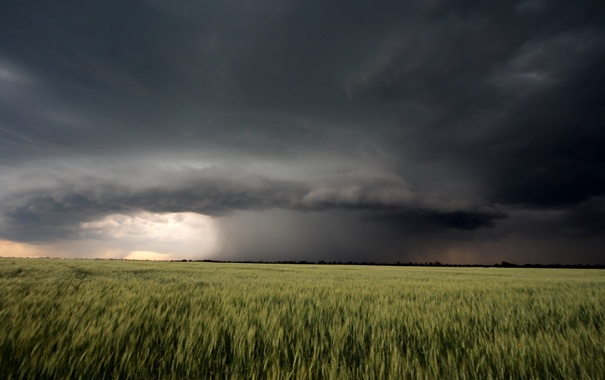Soggy start to European spring

Unfavourable weather conditions have dominated the European Union’s grain-production landscape all season, with a significant proportion of the continent facing a seriously challenging spring and summer to keep the grain production outlook on track.
According to the European Union’s latest JRC MARS bulletin, large parts of western, northern and eastern Europe have suffered due to excessively wet conditions since the 2023 autumn. This has negatively impacted the planting, emergence and development of this season’s winter crops. Additional damage was recorded in many parts of northern and eastern Europe from a series of severe frost events in December and January.
The prolific rain events also made it extremely difficult for farmers to access their paddocks to spread fertilisers, make the required herbicide, fungicide and pesticide applications to winter crops and prepare the seedbed for the spring planting program. The most severely affected fields in the north are expected to be resown with spring or summer crops, but in the south, the impact will manifest primarily in a reduction in winter-crop yield potential.
Conversely, the winter crops in the eastern parts of Romania and Bulgaria are suffering from an enduring rainfall deficit. The winter rapeseed crops are the worst affected, and there appears little hope of a recovery to average output, with an expansion in the affected area highly probable in the absence of significant rainfall.
Following Europe’s second warmest boreal autumn on record, the winter months of December, January, and February also saw warmer-than-usual temperatures across all but the north of the continent. The average daily temperature recorded south of the 56 degrees north latitude averaged between two and four degrees Celsius above the long-term average (1991-2023). Temperatures up to two degrees Celsius below the long-term average were recorded throughout most of Scandinavia.
Late last month, the European Commission released its first supply-and-demand projections for the 2024-25 season, pegging total cereal, oilseed and pulse output at 316.2 million tonnes (Mt), 3.3pc or 10Mt higher than the current season. This is off a total planted area of 64.1 million hectares (Mha), marginally higher than the 64Mha planted in the 2023-24 campaign. Despite some yield losses due to the drenching conditions, the total cereal, oilseed and pulse production outlook still compares favourably with the five-year average of 314.5Mt.
Cereal production is expected to be 9Mt or 3.4pc higher than the 2023-24 crop at 278.8Mt, with the planted area of 50.6Mt fractionally higher than the 50.3Mt sown for the 2023-24 harvest. The oilseed component of total production is forecast to be 1.42pc, or 500,000t lower at 33.4Mt off an almost unchanged planted area of 11.9Mha. Pulses occupy a relatively minor proportion of crop area in the EU of 1.7Mha, and output is expected to be 3.4Mt, down from 3.9Mt in 2023-24.
The biggest crop across the European Union each year is soft wheat, and 2024-25 output is currently forecast to be 120.8Mt, 4.9Mt or 3.9pc lower than the previous season and 4.8pc lower than the five-year average of 126.8Mt. Durum production is also expected to be down next season at 6.7Mt compared to 7Mt in 2023-24 and the five-year average of 7.4Mt. These forecasts are off planted areas of 20.9Mha and 2Mha for soft wheat and durum respectively, down 3.7pc and 8.8pc.
The lower wheat output is more than compensated by a significant recovery in the barley production outlook. The EC forecasts the barley crop to yield a total of 53.7Mt, 6.2Mt or 13pc higher than in 2023/24 and 1.5Mt, or 2.8pc above the five-year average. The planted area is estimated to be 3.5pc higher year-on-year at 10.7 million hectares.
Among the minor cereal crops, triticale production is projected to be 1.9pc lower season-on-season at 10.8Mt, oats output is expected to be 19.6pc higher at 7Mt, and rye production is estimated at 7.6Mt, 2.3pc above that of 2023/24. All are around 3pc below their respective five-year output averages.
The main summer crop across Europe each season is corn, and the EC expects this year’s harvest to be a tad under 69Mt, 10.8pc or 6.7Mt higher than the 2023 campaign. This continues the recovery from the disastrous 2022 harvest of only 53.1Mt and is now 3.6pc or 2.4Mt above the five-year average. The projected planted area of 9.2 million hectares is 9.1pc higher year-on-year, but only 3.5pc higher than 2022.
Rapeseed is the EU’s biggest oilseed crop each season, and the 2024-25 forecast has production 1.8pc lower at 19.5Mt but still 9.5pc higher than the five-year average of 17.8Mt. The planted area is 3.6pc lower at just under 6Mt compared to 6.2Mt in 2023-24.
The only other oilseed crop of significance grown in Europe each year is sunflower seed, with 2024-25 output expected to be 10.7Mt, 4.9pc higher than the previous season’s crop of 10.2Mt and 7.8pc above the five-year average of 9.9Mt. The planted area of 4.8Mt is basically unchanged compared to 2023/24.
The soggy spring conditions have red flags being raised on a number of fronts across the continent. The wet areas desperately need a reprieve to dry the ground, relieve winter-crop stress, and get the spring planting program under way. The yield concerns appear to have halted the long downward price trend, with the EC’s production forecasts under serious threat if more favourable weather conditions fail to materialise in the coming weeks.
Read also
Ukraine harvest update: Corn 89% complete, sunflower seeds 93%
Saudi Arabia strengthens its position in global grain markets
Kazakhstan may limit potato exports due to crop failure in Russia
Port investments by China in Latin America are reshaping the soybean market
EU introduces “carbon border tax”
Write to us
Our manager will contact you soon



